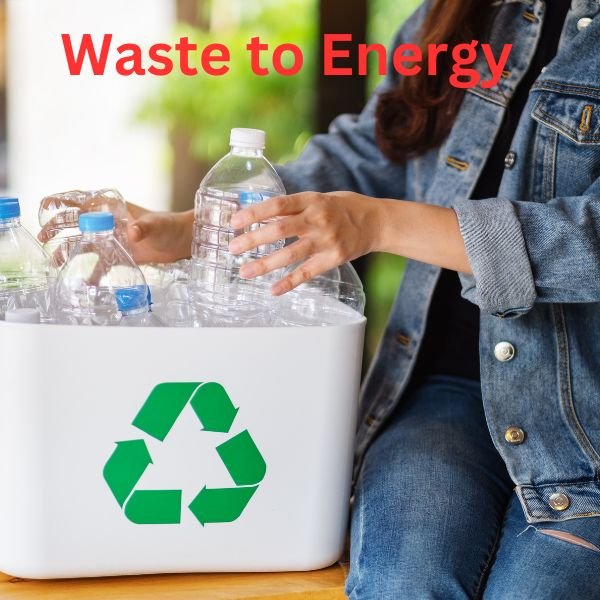We Can’t Waste Energy
It is about time we stop treating waste only as waste but look it as a potential energy source. Most wastes which are carelessly heaped on the land or thrown on the water bodies without proper treatment, can increase land and water pollution. These wastes also sometimes emit greenhouse gases like methane and carbon dioxide, which contribute to air pollution.
The need for effective and sustainable waste management is expected to grow as most cities are running out of landfill sites, which is the traditional method of disposing waste.
However, instead of presenting an environmental hazard the waste can be translated into a source of green energy. The health menace through solid and liquid wastes can be significantly reduced through the adoption of environment-friendly waste-to-energy technologies. Treatment of waste can generate electricity and heat and waste can also be used to generate bio gas and bio fuel.
Types of Waste
Wastes can be broadly categorised as biodegradable and non-biodegradable waste. Biodegradable wastes are those waste which can be decomposed and decayed by natural agents. Waste originating from plant and animal sources, such as human excretion, manure, sewage, and animal waste from slaughterhouse are examples of biodegradable waste.
Non-biodegradable wastes cannot be decomposed by natural agents. They remain on earth for millennia without any degradation and continue to cause environmental pollution for ages together. Thus their impact is more critical than that of the biodegradable waste. Plastic is an example of non-biodegradable waste as are chemicals used for agriculture and industrial purposes.
According to the US government’s Office of Energy Efficiency & Renewable Energy, wet waste, solid waste, and gaseous waste streams are potential high-impact resources for the domestic production of biofuels, bioproduct precursors, heat, and electricity. Wastes represent a significant and underutilised set of feedstocks for renewable fuel and product generation.
Municipal solid waste, agricultural waste, animal waste and industrial waste are among the different types of wastes which can be translated into energy.
Technologies for Energy
The process of waste-to-energy entails changing waste products into usable forms of energy. Waste-to-energy may involve an array of technologies which may involve thermal, biological or chemical processes.
Energy can be derived from waste through thermal conversion, thermo-chemical conversion, bio-chemical conversion and electrochemical conversion too. WTE technologies can translate non-recyclable waste into usable forms of energy. For example, the heat from the combustion of waste generates superheated steam in boilers, and the steam in turn drives turbogenerators to generate electricity.
A number of technologies ranging from conventional combustion process to state-of-the-art plasma gasification technology can be used to convert waste into energy.
The Indian Story
More waste-to-energy initiatives can help address India’s energy crisis and make us less dependent on fossil fuels. However, India’s waste-to-energy potential is much higher than its waste-to-energy achievement.
Now the waste-to-energy market in India is experiencing high demand, as there is now a growing awareness for sustainable sources of energy and of the potential health hazards from waste. Every year India generates 62 million tonnes of waste on an average, of which only about 70 percent are collected and much less than 20 percent are treated.
It is surprising but true that India has the potential to generate close to 5700 MW of energy from urban and industrial organic waste. However, this huge potential of waste-to-energy generation has been going largely underutilised in India, one of its reasons being its infrastructural lacunae. India was having only 14WtE plants in 2023. This underutilised capacity for waste-to-energy generation needs to be effectively explored by the state and private entrepreneurs in India more vigourously.
India needs huge amount of electricity and cater to this demand, exploration of various forms of renewable energy has become imperative. In this context, the waste-to-energy industry, which facilitates power generation through waste, can be an excellent option to dwell into.
One of the important health concerns of India pertains to its mountains of plastic waste. According to the recently published Plastic Overshoot Day report by Swiss non-profit EA Earth Action, though India’s per capita plastic waste production is among the lowest in the world, India happens to be among the twelve countries responsible for 60 percent of the earth’s mismanaged plastic waste. Therefore, conversion of plastic into energy through the technique of cold plasma pyrolysis is very much necessary in India.
In India, Ministry of New and Renewable Energy has come up with Waste to Energy programme, whose duration is from FY 2021-22 up to FY 2025-26. Till 30th January 2023, 90 waste-to-energy projects under Waste to Energy (WTE) Programme of Ministry of New and Renewable Energy (MNRE) were under various stages of implementation. These included seven biogas generation plants with a cumulative production capacity of about 83400 m3/day; 34 BioCNG generation plants with a cumulative production capacity of about 248000 kgs/day; and 49 power generation plants with a cumulative production capacity of about 330 MW.
The Global Scenario
Globally also the waste-to-energy market is gaining momentum. According to a market research report of Hyderabad-based Mordor Intelligence, waste-to-energy market size is estimated at 38.37 billion USD in 2024, and is expected to reach 65.29 billion USD by 2029, growing at a CAGR of 11.22 percent during the forecast period (2024-2029) of the study.
“Over the medium term, factors such as the increasing amount of waste generation, the growing concern for waste management to meet the need for sustainable urban living, and the increasing focus on non-fossil fuel sources of energy are expected to drive the waste-to-energy market. On the other hand, the expensive nature of incinerators, declining energy prices, and the inability of several plants to cover operating costs are expected to hinder the growth of the market. These factors pose a threat to the waste-to-energy market during the forecast period,” observes the above-mentioned study.
In the waste-to-energy market thermal technology is expected to play a crucial role. The above-mentioned report from Mordor Intelligence states that thermal technology is expected to account for the highest market share in the waste-to-energy market during the forecast period, owing to the increasing development of waste incineration facilities worldwide. The report also informs that thermal-based waste-to-energy conversion is expected to lead the market, especially in Asia-Pacific’s growing economies.
As far as geographies are concerned, according to the report of Mordor Intelligence, Asia-Pacific witnessed significant development in the waste-to-energy industry in the past few years. It points out that the region dominates the market with increasing efforts taken by the governments in the region to adopt better municipal solid waste (MSW) management practices, providing incentives for waste-to-energy projects in the form of capital subsidies and feed-in tariffs and financial support for R&D projects on a cost-sharing basis.
The report further informs that Japan is one of the leading waste-to-energy markets in Asia-Pacific. The country’s waste-to-energy market is driven by efficient solid waste management and financial support for waste-to-energy projects from both national and local governments. The country is expected to introduce waste management and recycling technologies to preserve the environment; effectively turning waste into resources or appropriately disposing of it, notes the report.
Overall, we can say that waste-to-energy is the need of the hour to solve the ongoing energy crisis of the world.




